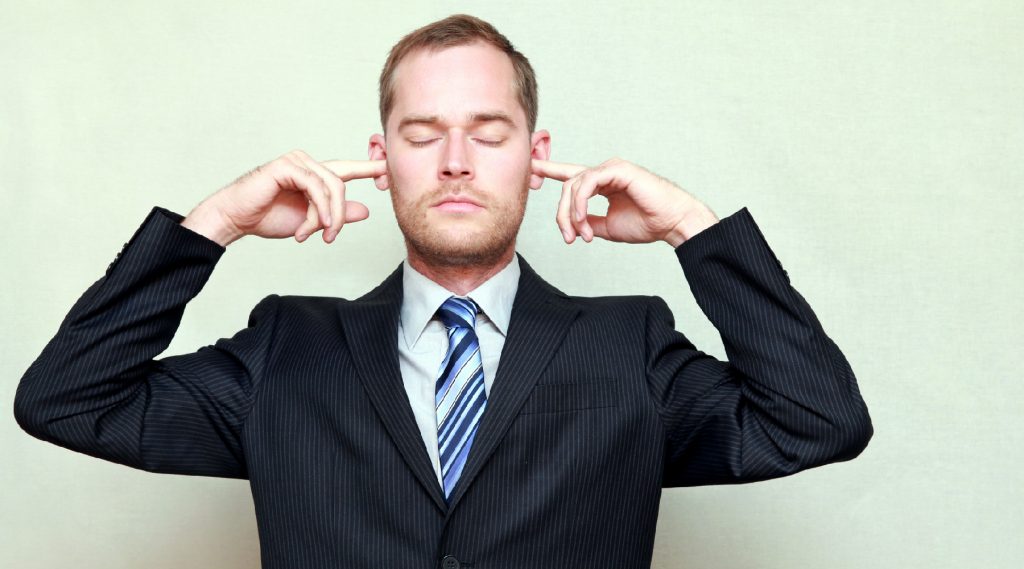Why are customers so rude?
Most people who have worked in a customer-facing role have asked themselves the question, “Why are customers so rude?” There are many answers to this question, ranging from issues that solely have to do with the customer to the business being at fault. Either way, dealing with rude customers is never a pleasant experience.
Whether the customer’s rudeness causes mild irritation (for example, talking on the phone while you’re trying to speak to them) or results in genuine distress because of abusive language, there are strategies that can mitigate the effect of bad behavior on your staff and on your business. The right tactics can turn difficult and rude customers into fans of your business. As much as it can be tempting to dismiss rude customers, trying to manage volatile situations may be better for your business in the long run.
How to handle conflict
As a business owner, you should equip your staff to successfully handle conflict through regular training. In the event that a customer becomes angry, impatient or demanding, your staff will have the tools to de-escalate the situation. Employees should always deal with rude customers in a professional way in order to regain control of the conversation.
There are right and wrong ways to deal with rude customers. This article lists reasons why consumers may regret being rude to people who provide customer service. It provides quotes from front-line staff about how they deal with rude customers. Some of the ways that employees get back include:
Charging customers full price for clearance items
Serving the wrong coffee
Spitting in food
You’d probably be very disappointed to find your employees resorting to such tactics when dealing with rude customers. Although it’s understandable that staff will be negatively affected by rude behavior, your policies must make it clear that such retaliation will have serious consequences. If your employees are caught responding to rude customers in an unacceptable way, it’s no understatement that you could lose your business. All it takes is for the customer to use social media to explain their experience and your business reputation could suffer irreparable damage.

5 reasons why customers are rude & how to deal with them
Here are five reasons why customers are rude. Jump to the section to find out ways your staff can deal with these problems:
1. Bad customer service

It can be difficult to accept that some of your employees’ attitudes can have a negative impact on your customers. Poor customer service could be the result of a lack of training or the employee may be having a bad day. If the customer feels like they’re not getting the service they’re entitled to, they may act up.
Regardless of who had the bad attitude first, it’s your employees’ responsibility to try to get the customer onside. Your employee can simply ask how they can help the customer. A sincere question can serve to disarm a rude customer. However, if the question is asked in an antagonistic tone, it could serve to upset the customer even further. Training your team to offer better customer service can go a long way in preventing customers getting irritated, which normally escalates into rudeness. Your customer service training should include:
Developing scripts – It’s likely that you and your team have encountered the same type of rude customer more than once. Use this experience to role-play the scenarios where interaction with a customer is less than ideal. Develop scripted responses based on this exercise. Your team can use these answers when they encounter a rude customer. While using canned responses, your team should be aware that they may need to amend them to find what works best for each rude customer. The point is to equip your team with responses that form the foundation for dealing with rude customers.
Staying calm – No one likes to be shouted at or dismissed. Although it may be justifiable, ‘giving as good as you get’ when a customer is rude will only escalate the situation. Your training should focus on helping your team to stay calm in heated situations. Your training should help your team develop strategies to pacify the situation without doing things that could irritate the customer even further, such as making sarcastic remarks. It’s important for employees to keep their feelings under control and sometimes bite their tongues when dealing with rude customers.
Avoiding the blame game – Employees should be trained to avoid using language that blames the customer or the company. Directly blaming the customer – even if it’s their mistake – is a guaranteed way of getting them even more irate. However, blaming the company can lead to the customer filing a lawsuit. Instead of saying that the customer or the company has made a mistake, the employee could try saying the following, “I’m really sorry, there seems to be a mistake and we’ll try to fix it immediately.” This response demonstrates to the rude customer that you’ve acknowledged that something’s gone wrong and you’ll try your best to rectify it.
2. Failed promises

When your business has clearly failed to keep a promise that it’s made, here are some tips on how to train employees to handle customers who show their displeasure:
Show care – Your employees should acknowledge the reasons that the customer is angry. Ask your employees to put themselves in the customers’ shoes. For instance, they’d obviously feel disappointed if they were looking forward to receiving an item that was promised and found that it wasn’t available. There’s rarely a justification for rudeness, but understanding why the customer is disappointed will go a long way in calming them down.
Say sorry – Where it’s clear that a promise hasn’t been kept, your employees should apologise. Keep the apology strictly to the promise being discussed e.g. “I’m sorry that you weren’t able to collect the item in-store today as promised.” An apology in this situation is different from when the business isn’t at fault. Where a customer is angry and becomes rude and it’s no fault of your business, the apology should center on the customers’ feeling. Your employees should say something along the lines of “I’m sorry you feel this way.”
Take action – Training your staff to try to calm down rude customers by showing understanding and saying the right things is only part of the solution. Rude customers who have been legitimately let down by your business will only truly value one thing – they need action. When your business has broken a promise, your employees should go above and beyond to solve the customers’ problem. Your employees should reassure the customer that they will do whatever it takes to find a satisfactory solution. However, employees should be careful not to make another promise that they can’t keep.
3. Not listening

Customers want to feel like they’re being heard. The rise of the ‘entitled customer’ means that consumers expect a superior experience and this includes taking their needs and wants into consideration. Customers expect more from the businesses they choose to spend their money with. If customers feel like they aren’t being heard, they are likely to make their feelings known, both in person and online.
Unfortunately, this displeasure is often expressed in rude ways. Since 75% of consumers have advised that they would buy from retailers who know their name, what they have bought in the past and can make recommendations, it pays to listen to customers (even the rude ones) to get more insight. Here are some ways that your employees can meaningfully listen to rude customers:
Active listening – It’s easy to get lost in the emotion of the situation when dealing with rude customers. Train your employees to practice active listening in combative situations. Active listening is making a mindful effort to hear not only the words being spoken, but to understand the complete message and context behind the words. A practical way for your employees to demonstrate active listening is to repeat what the rude customer says back to them. This has to be done in your employee’s own words to show the customer that they’re getting their point across.
No interruptions – If a customer’s frustration has transitioned into rudeness, they will probably have a lot to say. Train your employees to let the customers get the complaint off their chest without interruption. Someone who’s already angry won’t appreciate being cut-off. An obvious exception to the ‘no interruption’ rule is if the customer becomes abusive. Your employees will have every right to interject if a rude customer crosses the line.
Body language – A famous 1967 study introduced the idea that at least 93% of communication is nonverbal. When dealing with rude customers, your employees should maintain good eye contact. Looking everywhere but at the customer will give the impression of disinterest. Your employees should also avoid intensive eye contact that could lead to the customer feeling intimidated. The eye contact needs to be natural and non-threatening. Crossed arms when dealing with rude customers are a sign that your employees might be taking a defensive approach. This could lead to the customer becoming even more defensive and irate. On the other hand, uncrossed arms help your employees to remain open-minded and calm to help them to disarm the rude customer.
4. Inadequate customer experience

There may be times when your business fails to live up to an expected level of customer experience. The reasons could range from rude staff who treat customers with little respect or a poor in-store and online experience. Although the customer isn’t always right, it’s up to business owners to provide the best possible customer experience by doing the following:
Hiring the best – Your employees are the face of your business, so it’s important to hire the most suitable candidates, even if they’re only expected to work with you on a seasonal basis. You should oversee the entire hiring process – from interviewing to screening – in order to ensure that the right people will represent your business. After you’ve hired your employees, you should provide continuous training to educate them about your business strategy and values. Your business should always have the right level of staffing so that customers can get help whenever they’re in need. The right workforce management tool will guarantee that your business isn’t under or over-staffed.
Creating effortless design – Make it easy for your customers to navigate both your online and offline stores. Use visual merchandising to create an inviting atmosphere. Every step should be taken to reduce the customers’ frustration. Use tools like a point-of-sale system to help provide a seamless customer experience. The fewer obstructions to customer satisfaction, the less likely that customers will get irritated. Consider making payments mobile, so that customers can pay on the shop floor without joining a long line.
5. A bad day

There may be occasions when you and your employees have done everything you possibly can to provide the best experience, but a customer is still rude. It could be that the customer’s having a bad day and will be rude no matter what. A sign that rude customers are probably taking out their frustrations on your staff is when they make complaints that your staff have absolutely no power to solve. For instance, if a customer gets angry at a barista for not using a certain style of cup that the coffee shop doesn’t stock. If a situation arises where it’s going to be difficult to please the customer no matter what, try these techniques:
Leave a comment – Firstly, your employees should politely explain that they’re unable to resolve the customer’s problem. They should then invite the customer to fill out a comment form or provide them with an email address where they can air their grievance. If a customer does complete a comment form, ensure that you respond to their suggestions.
Create boundaries – It’s your duty to protect your staff from abuse. You should provide your employees with techniques to cope when customer rudeness becomes abusive behavior. Foul language, threats, and hateful speech shouldn’t be tolerated. Your employees should communicate to the rude and abusive customer what will happen if they continue acting in an unacceptable way. Implement an escalation procedure that should include escalation to a manager, issuing a warning and ejection from the store if necessary.
Happy customers = better business

Answering the question, “Why are customers so rude?” requires, firstly, taking a long, hard look at business practices to determine that you’re striving to provide the best experience. All businesses fall short of their intention to provide the best customer service sometimes. Rude customers can provide you with valuable business growth opportunities.
However, in order for your loyal employees to feel valued, you need to demonstrate that you’re willing to draw the line when customers’ behavior escalates from rude to abusive.
Here at Deputy, we put our customers and partners first. Our mission is to help improve the lives of employers and employees, using technology to transform operations and help businesses thrive.
By simplifying scheduling, timesheets, tasks and workplace communication, Deputy can transform business operations. Try Deputy for free here and book a demo with one of our team members below:
